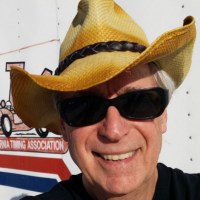Tesla will start turning on fully autonomous features in the electric car manufacturer’s self-driving Autopilot software this August, according to CEO Elon Musk.
Musk mentioned the next major Autopilot rollout when he addressed a comment in his Twitter feed from Twitter user Anand Krishnamurthy (@anandrajk). Krishnamurthy wrote, “Speaking of merging and autopilot the biggest issue i have noticed is when two lanes merge and it is rush hour traffic. The autopilot is not able to decide to let the car slightly ahead on the neighboring lane go ahead and I invariably find myself cornered !”
Musk replied to Krishnamurthy’s comment with news about the next Autopilot update. “That issue is better in latest Autopilot software rolling out now & fully fixed in August update as part of our long-awaited Tesla Version 9. To date, Autopilot resources have rightly focused entirely on safety. With V9, we will begin to enable full self-driving features.”
That issue is better in latest Autopilot software rolling out now & fully fixed in August update as part of our long-awaited Tesla Version 9. To date, Autopilot resources have rightly focused entirely on safety. With V9, we will begin to enable full self-driving features.
— Elon Musk (@elonmusk) June 10, 2018
The last major Autopilot upgrade, Tesla Version 8.0, was in July 2016. Tesla updates vehicle software automatically via wireless connectivity; the company’s over-the-air (OTA) technology means owners don’t have to take their vehicles to a Tesla service center for new software.
Between major program versions, Tesla tweaks the software with updates and fixes as necessary. The most recent minor update started rolling out June 10 with Autopilot version 2018.21.9, which attempts to increase driver attention when the Autopilot system is engaged. Tesla shortened the time from about two minutes to approximately 30 seconds before issuing visible and audible warnings when it detects the driver’s hands are not on the steering wheel.
The latest update did not please Tesla owners. With the recent change, drivers placing their hands on the wheel isn’t enough to deter alerts. In answer to a Twitter comment, Musk wrote, “Will be adjusting screen alert to clarify that we mean ‘slight up or downward force on the wheel’, not really ‘hold the wheel.'”
Will be adjusting screen alert to clarify that we mean “slight up or downward force on the wheel”, not really “hold the wheel”
— Elon Musk (@elonmusk) June 13, 2018
In an earlier Tweet, Musk expressed the frustration in achieving the optimal balance between driver complacency and driver annoyance in a system designed to improve safety. “Sigh. This is crux of matter: can’t make system too annoying or people won’t use it, negatively affecting safety, but also can’t allow people to get too complacent or safety again suffers. Latest update should have a positive effect on latter issue especially,” Musk wrote.
With more vehicle autonomy coming in August, Tesla owners may yet again need to learn the safest way to use Autopilot.


